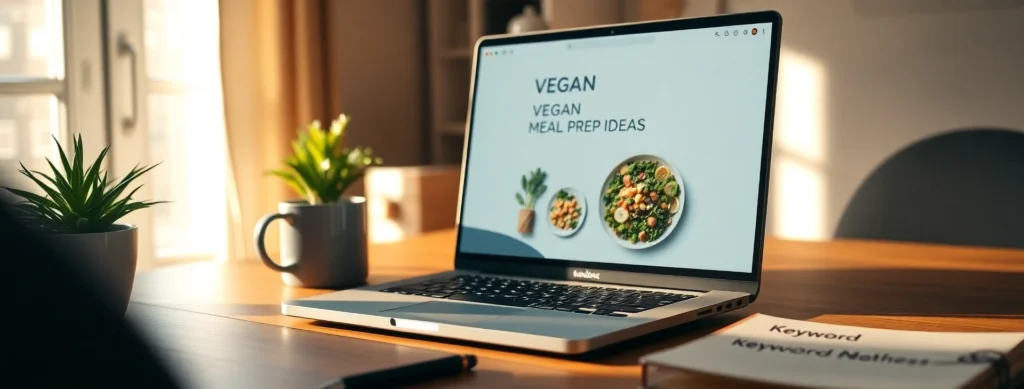
Search Engine Optimization (SEO) remains one of the most powerful and cost-effective tools to grow your blog organically in today’s digital landscape. Whether you’re a brand-new blogger or looking to sharpen your skills, understanding SEO fundamentals is essential to getting your content discovered by the right audience without relying on paid ads. This guide will walk you through the key SEO principles you need to know, plus a glimpse into emerging trends shaping SEO in 2025 — so you can stay ahead of the curve and maximize your blog’s growth potential.
Affiliate Disclaimer: This post may contain affiliate links, which means if you make a purchase through my links, I may earn a small commission at no extra cost to you. I only recommend products and services I genuinely use and love.
What Is SEO and Why Should Bloggers Care?
SEO stands for Search Engine Optimization, which is the strategic process of enhancing your website and content to rank higher in search engine results pages (SERPs) like Google, Bing, and others. When done effectively, SEO helps your blog attract free, targeted traffic by matching what people are searching for with the solutions and stories you provide.
For bloggers, SEO is more than just a technical checklist—it’s a way to increase your blog’s visibility, build authority in your niche, and grow a loyal audience. Higher search rankings translate to more visitors who can become subscribers, customers, or engaged readers. Unlike paid advertising, the traffic you get through SEO compounds over time, creating long-term value for your blog’s success.
In this guide, you’ll learn the foundational SEO strategies every blogger should master, including keyword research, on-page optimization, and link building — plus practical tips to avoid common pitfalls. Whether you want to boost your existing blog or launch a new one in 2025, these SEO basics will set you up for consistent, sustainable growth.
Step 1: Master Keyword Research
Keyword research is the foundation of effective SEO. Keywords are the exact words and phrases your target audience types into search engines when looking for information, products, or solutions. Choosing the right keywords helps your blog posts show up in relevant searches and attract visitors who are genuinely interested in your content.
Why it matters: Without proper keyword research, you might create content that no one searches for or compete against huge sites where you can’t rank.
Tips to get started:
- Use reliable tools: Free tools like Ubersuggest and Google Keyword Planner help you discover keywords related to your niche. They provide useful data like search volume (how many people search for the keyword) and competition level (how hard it is to rank).
- Find the sweet spot: Aim for keywords with high search volume but low to medium competition. This gives you the best chance of ranking without battling huge established sites.
- Focus on long-tail keywords: These are longer, more specific phrases such as “best SEO tools for bloggers” instead of just “SEO tools.” Long-tail keywords usually have less competition and attract visitors who are ready to engage or buy.
Step 2: On-Page SEO Optimization
After identifying your target keywords, it’s essential to optimize your blog post so search engines understand what your content is about. On-page SEO ensures that every element on your page communicates your topic clearly and helps improve rankings.
Key on-page SEO elements to optimize:
- Title and meta description: Include your primary keyword naturally in your blog post’s title and meta description. These appear in search results and influence whether users click your link.
- Headings: Use proper heading tags (H1 for your main title, H2 for subheadings, H3 for smaller sections). Include keywords in some headings to signal relevance.
- URL slug: Keep your blog post’s URL short, descriptive, and keyword-rich (e.g., /best-seo-tools-bloggers).
- Internal links: Link to other related blog posts on your site. This helps search engines crawl your site better and keeps readers engaged longer.
- External links: Link out to trustworthy, authoritative sources such as industry leaders or official organizations. This builds credibility for your content.
- Image alt text: Add descriptive alt text to all images using relevant keywords. This improves SEO and accessibility.
Step 3: Technical SEO for Beginners
Technical SEO involves the behind-the-scenes website factors that impact how search engines crawl and rank your blog. While it can sound intimidating, you don’t need advanced coding skills to handle the basics.
Focus on these key technical areas:
- Fast loading speed: Page speed is a ranking factor and directly impacts user experience. Use free tools like GTmetrix or Google PageSpeed Insights to test your site and implement speed improvements like image compression and caching.
- Mobile responsiveness: Since most users browse on mobile devices, your blog must display correctly on all screen sizes. Choose responsive themes and test on phones and tablets.
- Secure site with HTTPS: Security is important for SEO and visitor trust. Make sure your site uses HTTPS, which encrypts data transferred between the browser and server.
- Clean URL structure: Use simple, readable URLs without unnecessary parameters or numbers.
- Schema markup: This is a type of code that helps search engines better understand your content. Adding schema for FAQs, articles, or reviews can improve your search results with rich snippets, making your listing more attractive.
Step 4: Build Internal & External Links
Link building is a crucial SEO strategy that helps establish your blog’s authority and improves user navigation.
- Internal links: Linking to your own content keeps readers on your site longer, reduces bounce rates, and helps Google discover more pages on your blog. For example, if you mention “keyword research,” link it to your detailed post on the topic.
- External links: Linking out to reputable websites like Moz’s SEO Guide, government resources like SBA.gov, or respected blogs adds credibility and trustworthiness to your content. It shows search engines you’re referencing authoritative sources, which benefits your ranking.
Step 5: Understand the Future of SEO (2025 and Beyond)
SEO is constantly evolving, and staying updated is essential for long-term success. Here are key trends to watch and incorporate into your strategy in 2025:
- AI-Generated Content: AI writing tools like ChatGPT can help brainstorm or draft content faster. However, it’s important to always edit and add your unique voice to maintain quality and originality.
- Search Intent Optimization: Google’s algorithms prioritize content that truly answers the user’s query. Focus on understanding why people search a keyword and deliver comprehensive, relevant answers.
- Voice Search: With the rise of smart speakers and voice assistants, optimize for conversational queries like “What’s the best SEO tool for bloggers?” rather than just short keywords.
- E-E-A-T (Experience, Expertise, Authoritativeness, Trustworthiness): Google favors content from credible sources. Showcase your credentials, share personal experience, and build trust with clear author bios and transparent content.
- Core Web Vitals: These are user experience metrics that measure page speed, responsiveness, and visual stability. Improving these can positively impact your search rankings.
SEO Tools for Bloggers
To put these strategies into practice, these tools will help you stay organized, track progress, and optimize your blog effectively:
- Yoast SEO or Rank Math: Popular WordPress plugins that simplify on-page SEO, helping you optimize titles, meta descriptions, and content structure without technical headaches.
- Google Search Console: A free tool to monitor your site’s performance, index coverage, and keywords that bring traffic.
- Google Analytics 4: Tracks visitor behavior so you can see which posts perform best and where to focus your efforts.
- Surfer SEO: Helps you analyze top-ranking content and optimize your posts with data-driven suggestions.
- Answer the Public: Great for discovering frequently asked questions and content ideas based on real search queries.
FAQ: SEO for Beginners in 2025
What is the easiest way to start SEO as a beginner?
Start with keyword research and optimizing your blog posts’ titles, headings, and meta descriptions. Use a plugin like Yoast SEO to guide you.
Do I need to learn coding for SEO?
No! Most SEO tasks are content-based. Tools and plugins handle the technical parts.
How long does it take to see SEO results?
Typically 3–6 months, depending on your niche, consistency, and competition.
What’s the best SEO tool for beginners?
Ubersuggest is great for beginners — it’s user-friendly and affordable. Check it out here.
How often should I update old blog posts?
Review content every 6–12 months and refresh any outdated information or links.
Should I use AI to write SEO content?
AI can help with structure and research, but always add human insight. Google prioritizes high-quality, helpful content.
What’s the difference between on-page and off-page SEO?
- On-page: Everything within your blog (keywords, links, meta).
- Off-page: Backlinks, social signals, and external reputation.
Where can I learn more about SEO?
Check out Moz’s Beginner Guide to SEO for comprehensive tutorials.
Final Thoughts
SEO might seem overwhelming at first, but it’s one of the most powerful tools for blog growth. By mastering the basics and staying up to date with 2025’s evolving landscape, you’ll stay ahead of the competition — and build sustainable traffic for years to come.


Pingback: Build a Digital Product Business with ChatGPT, Midjourney, and Canva – Sky Forbes